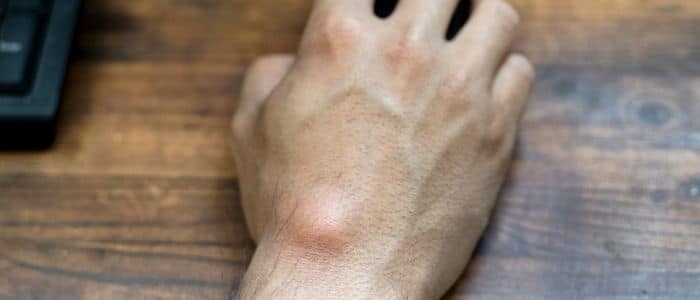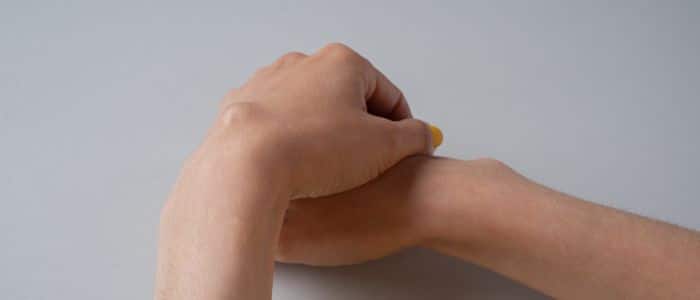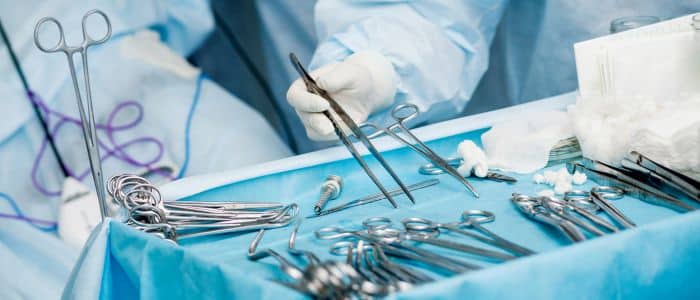
- Best Treatment Options for Lipoma
- Take our Plastic Surgery Quiz to find out if you'd be a good candidate for cosmetic surgery.
- What is a Lipoma?
- Types of Lipomas
- Diagnosis and Symptoms
- Treatment Options for Lipoma
- ✓ Surgical Excision
- ✓ Liposuction
- ✓ Minimal Excision Extraction
- ✓ Injection Lipolysis (Lipodissolve)
- Prognosis and Prevention
- Other Types of Swellings
- FAQs about Treatment Options for Lipoma and Other Swellings
- Can lipomas go away without treatment?
- What are the risks of lipoma removal surgery?
- Are there any non-surgical treatments for lipomas?
- How do I know if a swelling is a lipoma or something more serious?
- Further Reading about Skin Surgery with Consultant Plastic Surgeon Anca Breahna
- Medical References about Treatment Options for Lipoma and Other Swellings
Best Treatment Options for Lipoma
Lipomas are non-cancerous fatty lumps that develop under the skin, often appearing between ages 40-60. These painless, movable swellings can occur anywhere on the body, but commonly arise on the back, trunk, arms, shoulders, and neck. While typically harmless, lipomas may cause discomfort or self-consciousness, prompting individuals to explore treatment options.
In this blog, Chester Consultant Plastic Surgeon Anca Breahna explores the diagnosis, symptoms, and a range of treatment options for lipomas.
Take our Plastic Surgery Quiz to find out if you’d be a good candidate for cosmetic surgery.
What is a Lipoma?
A lipoma is a slow-growing, fatty lump that develops between the skin and underlying muscle layer. These benign (non-cancerous) soft tissue tumours are composed of fat cells (adipocytes) and are typically encapsulated by a thin layer of fibrous tissue.
- Lipomas are usually soft, doughy, and movable with slight finger pressure
- They are commonly found in middle-aged individuals (40-60 years old), although they can occur at any age
- Lipomas can develop anywhere on the body, but they are most commonly seen on the neck, shoulders, back, abdomen, arms, and thighs
- While lipomas are typically small (less than 2 inches or 5 cm in diameter), they can grow larger over time
- In some cases, lipomas can become painful if they grow and press on nearby nerves or contain many blood vessels
The exact cause of lipomas is not fully understood, but they tend to run in families, suggesting a genetic component. Other factors that may increase the risk of developing lipomas include:
- Being between 40-60 years old
- Having a genetic predisposition or inherited condition (e.g., Dercum’s disease, Gardner syndrome, Madelung’s disease)
Lipomas are usually diagnosed through a physical examination, where your surgeon can feel the soft, movable lump under the skin. In some cases, imaging tests like ultrasound, MRI, or CT scans may be used to confirm the diagnosis and rule out other types of swellings or tumours.
Types of Lipomas
Lipomas come in various types, each with distinct characteristics and compositions. Understanding these differences can aid in proper diagnosis and treatment. Here are some common types of lipomas:
- Conventional Lipomas: The most prevalent type, consisting solely of mature white fat cells. These are typically soft, movable lumps that feel doughy to the touch.
- Angiolipomas: These lipomas contain a significant amount of blood vessels, often making them painful or tender to the touch. They may appear slightly discoloured due to the increased vascularity.
- Fibro lipomas: A combination of fatty tissue and fibrous tissue, fibro lipomas can feel firmer or harder than conventional lipomas due to the fibrous component.
- Hibernomas: Unlike conventional lipomas, hibernomas are composed of brown fat instead of white fat. Brown fat helps regulate body temperature, and these lipomas are typically found in areas with higher concentrations of brown fat, such as the thighs, shoulders, or back.
- Myelolipomas: A rare type, myelolipomas are a mixture of fatty tissue and tissue that produces blood cells, resembling bone marrow. They are often found in the adrenal glands or other areas of the body.
- Spindle Cell Lipomas: In these lipomas, the fat cells have a longer, spindle-like shape rather than the typical round shape. They may be more challenging to diagnose accurately.
- Pleomorphic Lipomas: Characterised by fat cells of varying sizes and shapes, pleomorphic lipomas can appear concerning under a microscope due to their atypical appearance.
- Intramuscular Lipomas: As the name suggests, these lipomas develop within the muscle tissue rather than just under the skin.
- Atypical Lipomatous Tumours (ALTs): Previously known as well-differentiated liposarcomas, ALTs have a larger number of atypical fat cells that can resemble cancer cells under a microscope. However, they are not considered cancerous, but they may increase in size over time.
It’s essential to note that while most lipomas are benign, some rare types may require further evaluation or treatment due to their unique characteristics or potential for growth.
Diagnosis and Symptoms
Diagnosing a lipoma begins with a physical examination. Anca will carefully inspect and feel the lump under your skin to assess its size, texture, and mobility. Here are some steps in the diagnostic process:
- Physical Exam: Anca will palpate (feel) the lump to determine if it is soft, movable, and well-defined, which are characteristic features of a lipoma. She may also check for any associated pain or tenderness.
- Medical History: Your surgeon will inquire about the lump’s duration, any recent changes, and any family history of similar growths or genetic conditions linked to lipomas.
- Biopsy: In some cases, Anca may recommend a biopsy, which involves removing a small sample of the lump for laboratory analysis. This can help confirm the diagnosis and rule out other types of growths or tumours.
- Imaging Tests: Depending on the size, location, or characteristics of the lump, your surgeon may order imaging tests such as:
-
- Ultrasound: This can help distinguish a lipoma from other types of lumps or masses.
- MRI (Magnetic Resonance Imaging) or CT (Computed Tomography) scan: These detailed imaging tests may be recommended for larger, deeper, or atypical lipomas to better visualise their extent and location.
While lipomas are usually diagnosed through physical examination and medical history, it’s essential to rule out other conditions that may resemble lipomas, such as:
- Liposarcomas: These are rare, cancerous tumours that grow rapidly, are usually painful, and do not move under the skin. Further testing, such as a biopsy or imaging, may be necessary to distinguish them from lipomas.
- Cysts: These fluid-filled sacs may initially feel similar to lipomas but can become firmer and more defined as they grow.
- Fibromas: These are firm, non-cancerous growths composed of fibrous tissue that may require imaging or biopsy for confirmation.
- Abscesses: These are localised collections of pus that can be painful and may require imaging or drainage.
Early and accurate diagnosis is important to ensure appropriate treatment and monitoring, especially if the lump exhibits atypical features or is associated with concerning symptoms.
Treatment Options for Lipoma
The primary treatment for lipomas is surgical removal, especially if the lipoma is causing discomfort, pain, or growing in size. Here are the main treatment options:
✓ Surgical Excision
- This involves surgically removing the lipoma through an incision in the skin under local anaesthesia.
- The lipoma is dissected from the surrounding tissue, and the wound is closed with stitches.
- It’s an outpatient procedure, and patients can typically return to most activities quickly.
- Potential risks include bleeding, infection, and scarring, though recurrence is rare if the entire fibrous capsule is removed.
✓ Liposuction
- Liposuction can be used to remove medium to large lipomas (>4 cm) through a small incision and a hollow tube.
- It may be preferred for lipomas in areas where scarring should be minimised.
- The procedure is less invasive than traditional excision but may not remove the entire lipoma.
✓ Minimal Excision Extraction
- This technique involves making a small incision and squeezing or popping out the lipoma without extensive dissection.
- It can result in less scarring compared to traditional excision.
- Suitable for subcutaneous lipomas with overlying mobile skin.
✓ Injection Lipolysis (Lipodissolve)
- An emerging non-surgical option that involves injecting compounds like phosphatidylcholine/sodium deoxycholate into the lipoma to dissolve the fat cells.
- More research is needed to establish its safety and efficacy, but it may be an alternative for patients who cannot undergo surgery.
For asymptomatic lipomas that are not causing any issues, no treatment may be necessary. However, regular monitoring and evaluation by your doctor are recommended, especially for lipomas that exhibit atypical features or rapid growth, as these may require further investigation or intervention.
Prognosis and Prevention
The prognosis for benign lipomas is generally excellent, with a low risk of recurrence after complete surgical excision. Lipomas rarely grow back at the same site once the entire fibrous capsule has been removed. However, new lipomas may develop in other areas of the body over time.
To minimise the risk of recurrence, it’s important to follow Anca’s post-operative instructions carefully. This may include:
- Keeping the surgical site clean and dry
- Avoiding strenuous activities or heavy lifting for a specified period
- Attending follow-up appointments for monitoring
While lipomas themselves are benign and pose no risk of malignant transformation, it’s essential to have any new or concerning growths evaluated promptly by a medical professional.
Preventing lipomas can be challenging, as their exact causes are not fully understood. However, maintaining a healthy lifestyle, including a balanced diet and regular exercise, may help reduce the risk of developing lipomas or other types of swellings.
For other types of swellings, prevention strategies may vary:
- Cysts: Maintaining good hygiene and avoiding trauma to the affected area can help prevent certain types of cysts.
- Lymphadenopathy: Treating the underlying condition causing lymph node swelling, such as infections or autoimmune disorders, can help prevent or manage lymphadenopathy.
- Fibromas: While fibromas caused by genetics or unknown reasons cannot be prevented, those resulting from trauma or irritation may be avoided by taking precautions and minimising exposure to potential triggers.
- Abscesses: To prevent skin abscesses, maintain good hygiene, keep skin clean and dry, avoid sharing personal items, and promptly treat any cuts or wounds.
Remember, seeking prompt medical attention for any persistent or concerning swellings is essential for proper diagnosis, treatment, and prevention of potential complications.
Other Types of Swellings
Cysts: These are closed sacs filled with fluid, air, or semi-solid material. Common types include:
- Epidermoid cysts (sebaceous cysts): Slow-growing, firm lumps under the skin, often on the face, neck, or trunk.
- Ganglion cysts: Fluid-filled lumps that typically develop on the wrists, hands, or feet.
Lymphadenopathy: Swollen lymph nodes can result from infections, autoimmune disorders, or certain cancers. Common causes include:
- Viral infections (e.g., mononucleosis, HIV)
- Bacterial infections (e.g., streptococcal pharyngitis, tuberculosis)
- Autoimmune conditions (e.g., rheumatoid arthritis, lupus)
- Cancers (e.g., lymphoma, leukaemia) Treatment focuses on managing the underlying condition causing the lymph node swelling.
Liposarcoma: Unlike benign lipomas, liposarcomas are rare, malignant tumours that develop from fat cells. They can grow rapidly, cause pain, and may not move under the skin. Prompt evaluation and treatment, often involving surgery and/or radiation therapy, are crucial.
Fibroma: These are firm, non-cancerous growths composed of fibrous tissue. Common types include:
- Skin tags: Small, soft, skin-coloured growths that protrude from the skin.
- Acrochordons: Skin tags that commonly appear in areas of friction or skin creases.
- Dermatofibromas: Firm, reddish-brown nodules on the skin. Treatment may involve surgical removal or cryotherapy (freezing) for symptomatic or cosmetic concerns.
Abscess: An abscess is a localised collection of pus resulting from bacterial infection. It can occur under the skin (skin abscess) or within the body (internal abscess). Treatment typically involves drainage, antibiotics, and addressing the underlying cause.
While some swellings may be harmless, others can indicate underlying medical conditions. Seeking prompt medical evaluation is crucial for accurate diagnosis and appropriate management.
FAQs about Treatment Options for Lipoma and Other Swellings
Can lipomas go away without treatment?
- In most cases, lipomas do not go away without treatment. They usually grow slowly over time and might remain the same size or get slightly larger. However, since lipomas are benign and usually painless, treatment may not be necessary unless they become bothersome, painful, or interfere with movement.
What are the risks of lipoma removal surgery?
- Lipoma removal surgery is generally safe, but as with any surgical procedure, there are some risks involved. These can include infection, bleeding, scarring, and the possibility of recurrence. The risk of complications varies depending on the size and location of the lipoma, as well as your overall health.
Are there any non-surgical treatments for lipomas?
- Yes, there are non-surgical treatments for lipomas, such as steroid injections, which can reduce the size of the lipomas but may not completely eliminate them. Another method is liposuction, where the fat is sucked out, reducing the size but potentially leaving some lipoma tissue behind. These methods are considered less invasive than surgery and might be suitable for some patients.
How do I know if a swelling is a lipoma or something more serious?
- To accurately diagnose a swelling, a healthcare provider will need to perform a physical examination and possibly order imaging tests like an ultrasound or MRI. In some cases, a biopsy might be recommended to rule out more serious conditions, such as liposarcoma, a rare cancerous tumour that can initially resemble a lipoma.
Further Reading about Skin Surgery with Consultant Plastic Surgeon Anca Breahna
- Read more about Skin Mole Removal
- Read more about Cyst Removal Surgery
- Read more about Lip Lesion Excision/ Removal
- Read more about Mole Removal Chester
Medical References about Treatment Options for Lipoma and Other Swellings
- Treatment of Lipoma by Injection Lipolysis – PubMed
- Lipomas Treatment & Management – Medscape
- Lipoma – Diagnosis & treatment – Mayo Clinic
- Cutaneous Lipomas Treatment & Management – Mayo Clinic
- Lipoma: What Is It, Causes, Symptoms, Types, Treatment – Cleveland Clinic



 Ms Anca Breahna, PhD, MSc, FEBOPRAS, FRCS (Plast) is a highly regarded Consultant Plastic Surgeon specialising in the field of Aesthetic and Reconstructive Plastic Surgery. Anca performs a range of
Ms Anca Breahna, PhD, MSc, FEBOPRAS, FRCS (Plast) is a highly regarded Consultant Plastic Surgeon specialising in the field of Aesthetic and Reconstructive Plastic Surgery. Anca performs a range of 